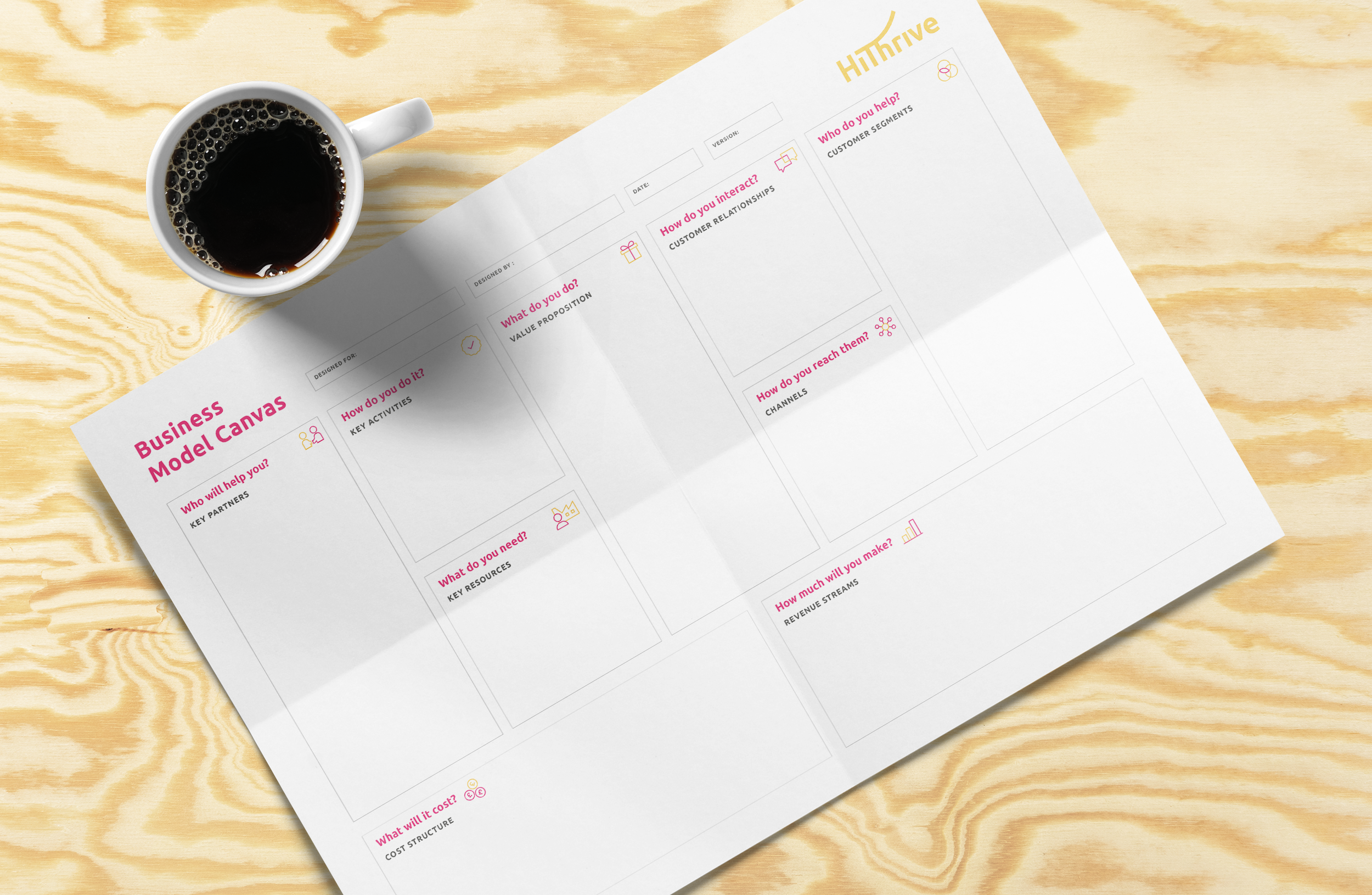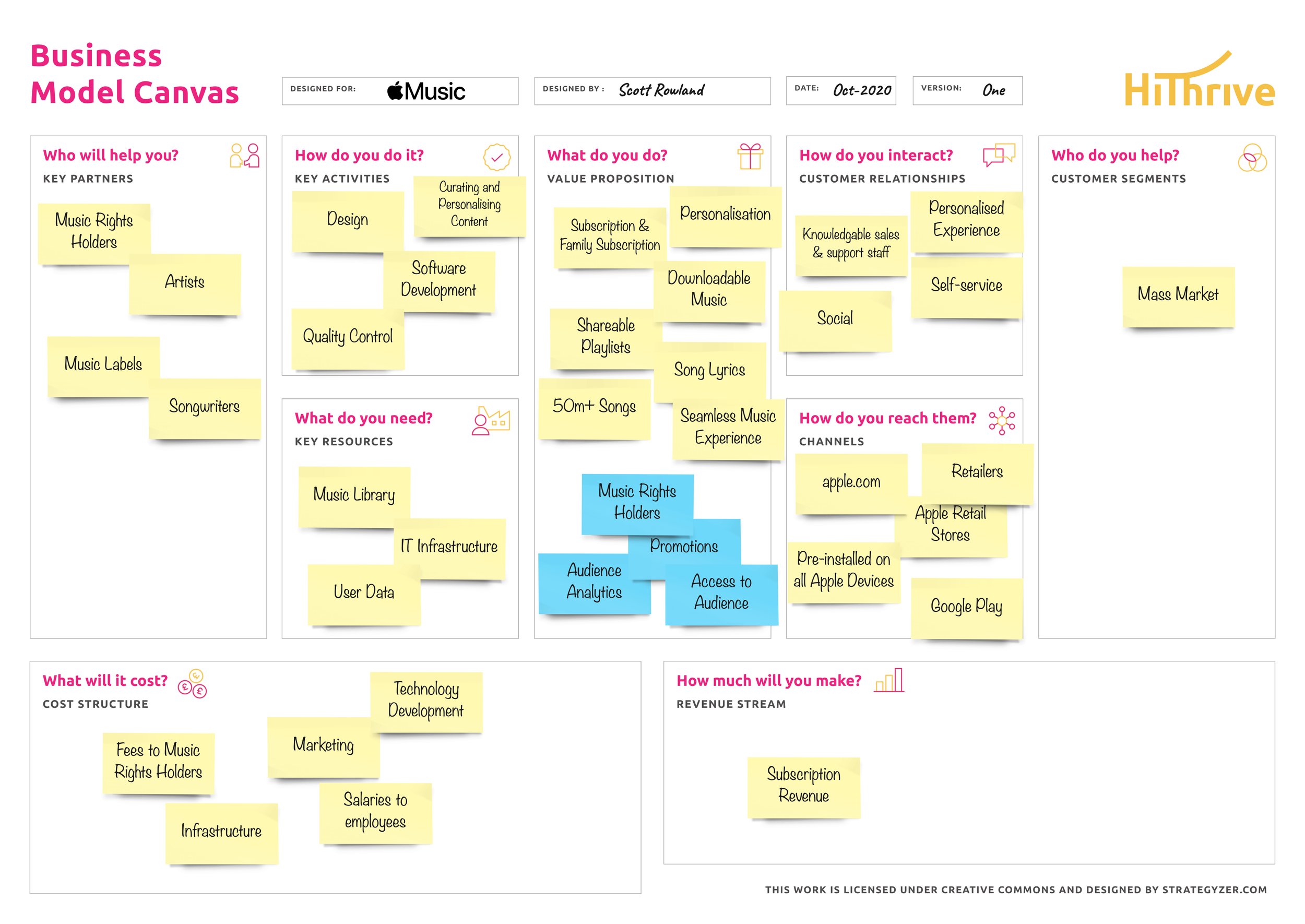Business Model Canvas Explained
Developing and understanding your business model is an essential part of creating a successful business. But what is a business model, and how can the Business Model Canvas help?
What is a Business Model?
Understanding the problem you are solving for your customers is extremely important when you’re starting or pivoting a business. There needs to be a demand for what you are selling, and your product or service needs to solve a real problem.
But, ensuring your product fits the needs of the market is only one part of a successful business. The other key aspect is to understand how you’re going to make money. This is where your business model comes in.
“A business model describes the rationale of how an organisation creates, delivers, and captures value.”
— Scott Rowland
What is the Business Model Canvas?
To fully map out your business, you need a business plan. And a good business plan requires a considerable amount of work. The Business Model Canvas enables you to verify your idea before investing so much time and effort.
It is a concise tool for thinking through your business. It allows you to describe, design, challenge, invert, and pivot your business model.
Canvas Overview
The Business Model Canvas can be best described through nine basic building blocks that show the logic behind how a company makes money. The nine blocks cover the four main areas of a business: customers, offer, infrastructure, and financial viability. The canvas is like a blueprint for a strategy to be implemented through organisational structures, processes, and systems.
Customer Segments: An organisation serves one or several Customer Segments.
Value Propositions: It seeks to solve customer problems and satisfy customer needs with value propositions.
Channels: Value propositions are delivered to customers through communication, distribution, and sales channels.
Customer Relationships: Customer relationships are established and maintained with each Customer Segment.
Revenue Streams: Revenue streams result from value propositions successfully offered to customers.
Key Resources: Key resources are the assets required to offer and deliver the previously described building blocks.
Key Activities: These are the most important things a company must do to make its business model work.
Key Partnerships: Some activities are outsourced and some resources are acquired outside the enterprise.
Cost Structure: The business model elements result in the cost structure.
Why use the Business Model Canvas?
Easy to understand: The canvas is printed on a single piece of paper, making it incredibly visual.
Focused: It removes all of the ‘fluff’ often found in traditional business models and easily shows the raw information.
Flexible: It’s quick and easy to make changes to your model and sketch out new ideas.
Customer-focused: It forces you to think about the value you are creating for your customers and what it will take to deliver that value.
Shows connections: Thanks to its single-page graphical design, the canvas shows how the different parts of the model interrelate to each other. Something often difficult to understand from a traditional business plan.
Easy to communicate: Thanks to its simplicity, the canvas is easily shared with a team, making it easier for them to get on board with your vision
Is the Business Model Canvas suitable for my business?
The Business Model Canvas is an excellent tool for use in any sized business, regardless of sector. Below are two examples from different business sectors.
Example 1: Music
In June 2015 Apple® unveiled Apple Music™, a music-streaming service with a worldwide live radio station broadcasting 24 hours a day. Boasting the largest and most diverse collection of music, users can stream Apple Music on any device.
As one of the fastest-growing platforms, Apple Music has 56 million paid subscribers, which is a 19% share of the market. They also enjoy a 24% share of total revenues in the industry.
Their success, in part, is thanks to it coming pre-installed on all Apple devices, of which there are 1.4 billion currently in use around the world. Also, some carriers bundle free Apple Music subscriptions with certain mobile phone service plans. They also have great relationships with artists, paying out 25% of the industries streaming revenue, despite only accounting for 6.36% of streams. That's because Apple's price per stream is $0.00675, a good deal higher than Spotify's $0.00348.
Example 2: Uber
In March 2009, Garrett Camp, Oscar Salazar, and Travis Kalanick founded a small unknown company - Uber Technologies Inc. Designed to revolutionise the industry, Uber launched its on-demand taxi-hailing service.
Uber's business model is quite simple; it is a digital aggregator app platform, connecting passengers who need a ride from point A to point B with drivers that are willing to serve them. In recent years, Uber has expanded its offering, and their services now include Uber Eats (on-demand food delivery) to Uber Freight (on-demand trucking).
Now in its 10th year, Uber has 5 million drivers, conducts 18.7 million trips per day, and boasts an annual turnover of $65bn.
Ready to Get Started?
Self-Guided
Start by downloading our free Business Model Canvas template, together with our complete how-to guide. To ensure you get the most of of your canvas, use this checklist:
Get the right team of 3-5 people together
Grab a large chunk of wall space
Print or draw the canvas on a big sheet of paper
Have plenty of sticky notes and markers ready
Allow yourself 45-60 minutes of undisturbed time
Guided Workshop
Looking for a hands-on approach? Want someone to guide you through the process of creating your own canvas? If so, our online Business Model Canvas workshop is the right option for you.
90-minute online guided workshop
Access to our online collaborative canvas
Your own completed .pdf canvas emailed to you at the end of the session
Ideal for individuals and groups of up to 5 people
£169 +VAT













